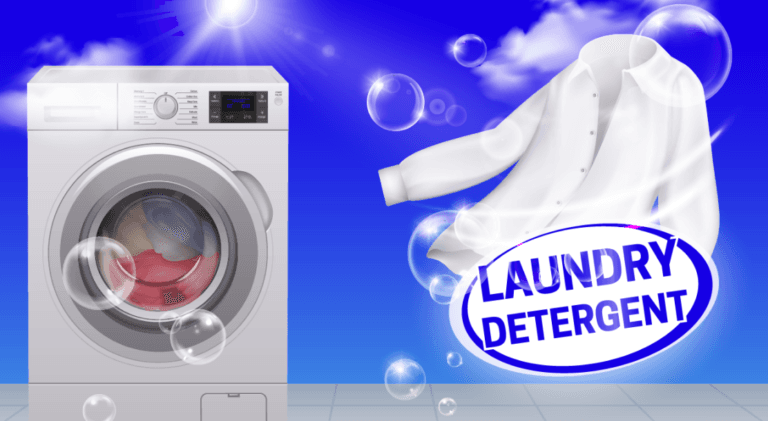10 Popular Indian Ads of the ‘90s and What We Can Learn From Them

The ‘90s were a completely different digital era. The internet wasn’t nearly as omnipresent today, so people depended mainly on television and radio for entertainment. This also meant that advertising was a whole different ball game.
If you were watching your favorite television show, you’d also have to sit through the ads that were interspersed throughout. Although most people today will be grateful that they have the option to be entertained without being compelled to sit through advertisements, some popular Indian ads from the ‘90s remain imprinted in people’s memories.
Let’s try to understand what it was about them that made them so popular and how they can be used in today’s world of marketing.
Popular Indian Ads from the ‘90s
1. Parle’s Melody Toffee
1994: Parle – Melody Khao Khud Jaan Jao

Melody has always stuck to its “melody itni chocolatey kyun hain?” tagline. Any ‘90s kid will definitely remember this tagline. This is because a short, catchy slogan can make a product more memorable.
Next time you’re designing an advertisement or a marketing strategy, try to incorporate a tagline that captures the essence of your service or product. This helps achieve two things:
● It draws attention to a distinctive part of the brand and creates a brand impression easily communicated from the business to the customers and among customers.
● It unifies the company’s marketing strategy so that the products or services can be effectively marketed without having lengthy texts or explanations of what the company is all about.
2. Amul Doodh
Amul Doodh hai wonderful – full Old Indian Ad Exclusive

Whoever wrote the Amul Doodh jingle at the time hopefully got a raise because that jingle was an earworm that was hard to get rid of. One of the most popular advertisements in India of its day, the reggae beat set to simple lyrics made it impossible not to hum along.
A jingle helps imprint the brand in the memory of consumers. When the earworm subconsciously reminds you of the brand, consumers are more likely to get familiarized. This familiarity can go a long way in helping the brand gain an edge over competitors because when potential customers think of the product, they will first associate your brand with it over others.
3. Zandu Balm

This touching Zandu Balm ad sees a child tending to her mother, who is unwell with a cold. The concept added an emotional component to the ad, making it all the more compelling. According to a Harvard professor, 95% of all purchasing decisions are made by the subconscious mind. He says that the biggest aspect of these subconscious urges is driven by emotion. Therefore, an emotional connection can offer a huge advantage in marketing.
Try to leverage a possible emotional connection that your potential customers can have with the brand. It may be directly related to your products or services or the brand image as a whole.
4. Maggi

Maggi is a staple in any Indian household. However, there was a time when it wasn’t, and becoming one of the most popular Indian ads in the ‘90s has certainly helped the product get to where it is today.
In the above advertisement, the marketing strategy is centered around the target audience—children. Therefore, it was prudent of them to create relatable ads for children. The ad shows children coming home hungry after playing outside, with a delicious serving of Maggi waiting for them. This would increase the likelihood that children viewing it at home would do the same.
Therefore, try to direct your marketing strategy toward your target audience.
5. Cadbury’s Dairy Milk
Cadbury Dairy Milk and Cricket are back

Although you might expect an advertisement for chocolate such as Dairy Milk to be directed to children, this was not the case in the ad you see here. Incorporating an attractive model at the crux of the advertisement was more likely to draw the attention of adults and adolescents rather than children. These advertisements helped expand the target demographic of the product and brand.
This may be contrary to the previous point, but it is also important to explore your audience. However, before investing time into modeling a marketing strategy for different audiences, it is important to do your research and gather enough information to ascertain a gap in that market. If your research suggests that there are certain audiences other than your target audience engaging with your brand, you can also cater to them.
6. Pepsi

What is the most surefire way to be considered a famous Indian ad? Starpower. Indian audiences can’t get enough of their celebrities, and this advertisement has 3 of them celebrating the advertised product.
It may not be possible for small businesses to acquire that kind of star power. However, the world of social media has brought in influencers who can help get the job done. Collaborate with influencers to help your brand gain notoriety.
7. Chocos

The lovable Chocos Bear in the above ad is their brand mascot. Brand mascots have been around for a long time. They serve two important purposes in any marketing strategy:
● Personification
They help bring the brand to life and put a face to it. These mascots can make it easier to exemplify brand values and help consumers gain a clearer image of the company. Its easier to relate to an animate idea rather than an abstract one.
● Identification
Brand mascots can help consumers pick the brand out from a crowd. This is a significant advantage to have in the competitive world that we live in.
8. Fevikwik

Adding character to your advertising and marketing strategy is essential. The key takeaway from this Fevikwik advertisement is the humor they have incorporated while still effectively conveying the purpose of the product.
Like the emotional touch, humor makes an ad more memorable and engaging. People are less likely to overlook the ad if it has an element of humor. At the same time, it is important to ensure that the brand or product is at the center of the strategy or advertisement and the humor complements it.
9. Onida

Sometimes the actual intention of an advertisement is lost in trying to make it interesting and engaging. An ad intends to convey information about the brand, service, or product to potential customers.
The Onida devil, another mascot of popular Indian ads of the ‘90s, does precisely that in this ad. He simply lists the product’s features (before getting distracted by the product itself). This is good old simple, straightforward marketing, which can certainly be necessary at times.
10. Dhara Cooking Oil
Dhara Cooking Oil – Jalebi 1 – Doordarshan (DD1) Old Add

As far as popular Indian ads go, this one is undoubtedly one of the most famous advertisements in India. This is because this ad tells a story. The power of storytelling can be pretty formidable, provided it is done well. A similar concept to evoking emotion, storytelling can help engrave the brand in the viewer’s memory.
However, the viewer can remember the story and forget about the brand/product. But in this ad, the product is framed perfectly through compelling visuals of jalebis made using the product.
The Final Word
Although all the above popular Indian ads are from a bygone era, advertising concepts are timeless. Hopefully, the lessons that can be taken away from these ads will help you on your marketing journey.

FAQs
V commercials and print ads were the primary means of advertising.
Ads from brands such as Amul, Titan, Coca-Cola, and Surf Excel have been some of the most popular in India
● Use keywords
● Address problems of the target audience
● Make use of emotions
● Include customer testimonials
● Use data points
● Display
● Video
● Mobile
● Native
● Strong credibility
● High audience attention levels
● Friendly audience reception
Latest Blogs
In this blog, explore the golden rules of using AI marketing tools so you can leverage the benefits to their maximum potential.
In this blog, you’ll learn how to avoid the pitfalls of SEO over-optimization while enhancing your site’s performance.
In this article, we’ll take a look at what AMP is, its advantages and disadvantages, and how it affects SEO.
Get your hands on the latest news!
Similar Posts

Advertising
4 mins read
5 Square Yards Ads That Caused Traffic Jams

Advertising
8 mins read
How the Nirma Ad Has Evolved Over the Years

Advertising
6 mins read